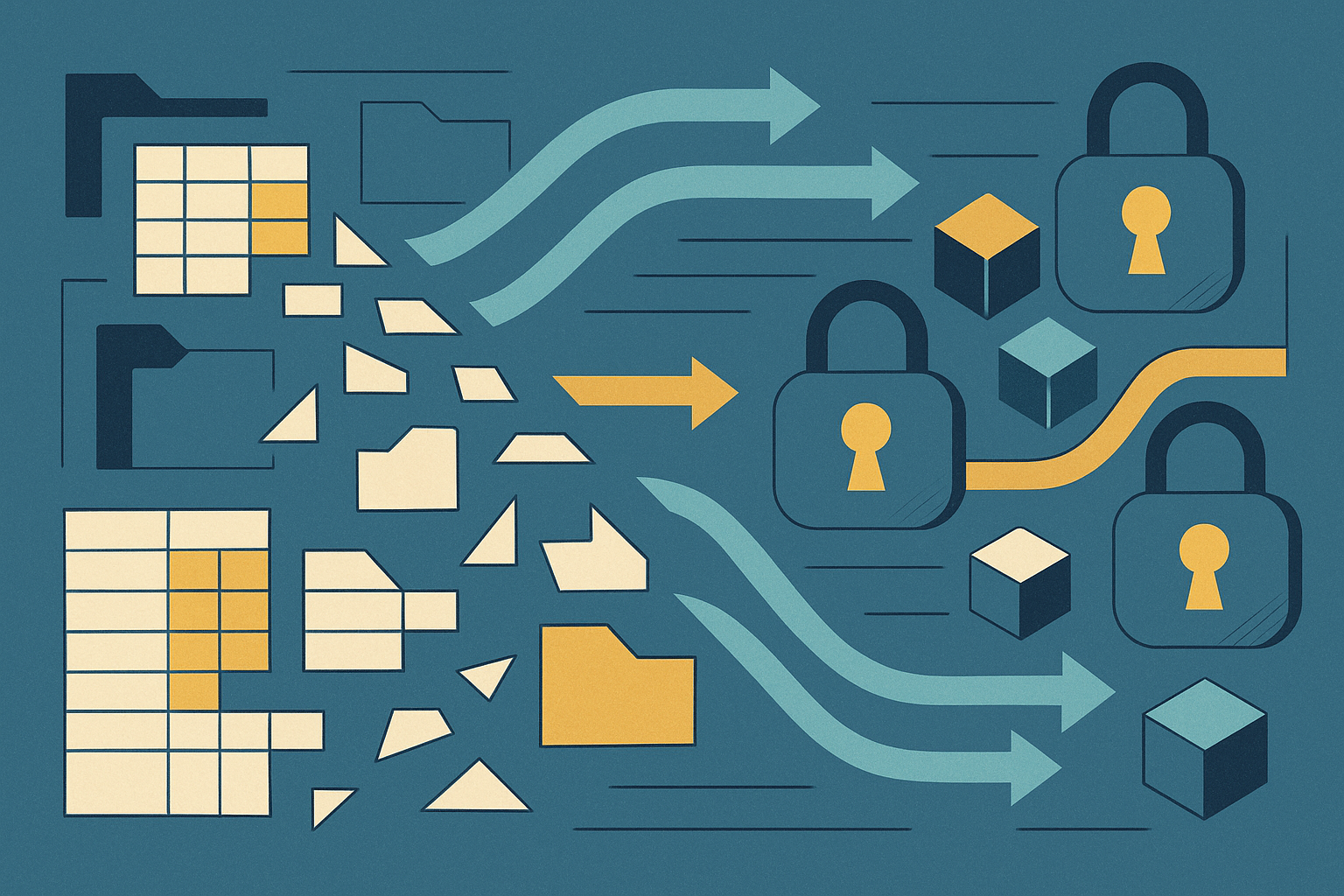Large organisations, ranging from retailers to payment service providers, routinely collect and store vast amounts of customer identity and supplier payment information; a trend that continues to grow in today’s data-driven society. However, many organisations still depend on fragmented systems to manage these details. While this poses a risk to any Personally Identifiable Information, the consequences can be severe when it involves bank account details.
Today, payment information is no longer confined to neatly organised accounting software – it’s often scattered across spreadsheets, shared folders, payroll systems, and accessed by several employees for various supplier transactions. This sprawling “data footprint” not only complicates day-to-day operations but also exposes businesses to heightened risk from both external hackers and insider threats. Recent high-profile breaches at major UK retailers have shown just how damaging data leaks can be. According to several industry sources, businesses now face serious challenges in protecting customer payment data – including a rise in fraud from both inside and outside the company, more advanced cyberattacks, and mistakes or system failures that expose sensitive information.
The hidden danger of data footprints —
Most organisations have their core systems like Enterprise Resource Planning platforms, Customer Relationship Management systems and card-processing gateways, well secured. But for many organisations the real vulnerability lies in the “long tail” of payments activity: payroll runs, supplier disbursements and one-off manual transfers.
In these scenarios, staff often resort to spreadsheets or shared folders to store account details. Those files are easy to copy, modify or leak. And crucially, there’s no reliable audit trail to track who last edited an IBAN, sort code or account number. The larger and more dispersed your data footprint, the greater the chance that a malicious insider or an opportunistic hacker will find and exploit these payment credentials.
Tokenisation offers a straightforward, powerful solution here. It involves replacing bank account details with unique, non-sensitive token identifiers that are stored and managed securely to neutralise risk, streamline compliance, and maintain operational efficiency—all while ensuring payments get to the right place, every time.
At its core, tokenisation is deceptively simple. Rather than storing true bank account numbers in your own payments systems, you send them to a secure tokenisation service via a one-time API call. The service captures the actual details in an encrypted central data store and returns a randomised, anonymous token. Only that token gets stored in the organisation’s ERP, payroll engine or supplier database.
When it’s time to initiate a payment, the token (alongside the payment amount and date) gets passed back to the tokenisation service, which retrieves the underlying account details and executes the transfer.
The result? Organisations can eliminate the need to use customers’ payment credentials in their payments processes by using non-reversible, meaningless tokens throughout the payment process.
Neutralising insider threats and external breaches —
Tokens are useless to attackers or rogue employees without access to the tokenisation system. Even if a spreadsheet full of tokens gets leaked, fraudsters cannot reverse-engineer the data into actual bank account numbers. This approach dramatically shrinks the attack surface, removing the need for dozens of spreadsheets, shared drives and local folders containing clear-text payment data.
Tokenisation doesn’t just improve security; it also has operational benefits.
Organisations no longer need to hunt down every system or folder where account details might lurk, nor train every employee on encryption key management. By removing bank account details from the environment, tokenisation reduces the risk of accidental exposure.
From an operational standpoint, implementation is straightforward. Once tokens replace account numbers in workflows, existing processes for scheduling, approving and reconciling payments remain unchanged. And because the change is minimal, teams adopt it faster.
Data breaches continue to raise the stakes for organisations handling sensitive customer information. As threats become more sophisticated, the pressure to strengthen data security strategies has never been greater. While tokenisation doesn’t prevent data breaches, it plays a crucial role in limiting the impact of a breach by replacing bank account details with non-reversible, meaningless tokens. This makes the exposed data far less valuable. Tokenisation helps reduce the exposure of bank account details to both internal and external threats and centralising those credentials in an encrypted data store greatly reduces a business’s risk. It also lets companies keep using their current payment processes. In my opinion, for any retailer, service provider or large enterprise managing payments at scale, tokenisation is no longer just an option — it’s a necessity.

Mark Bish is Principal Product Manager at Bottomline.



You must be logged in to post a comment.